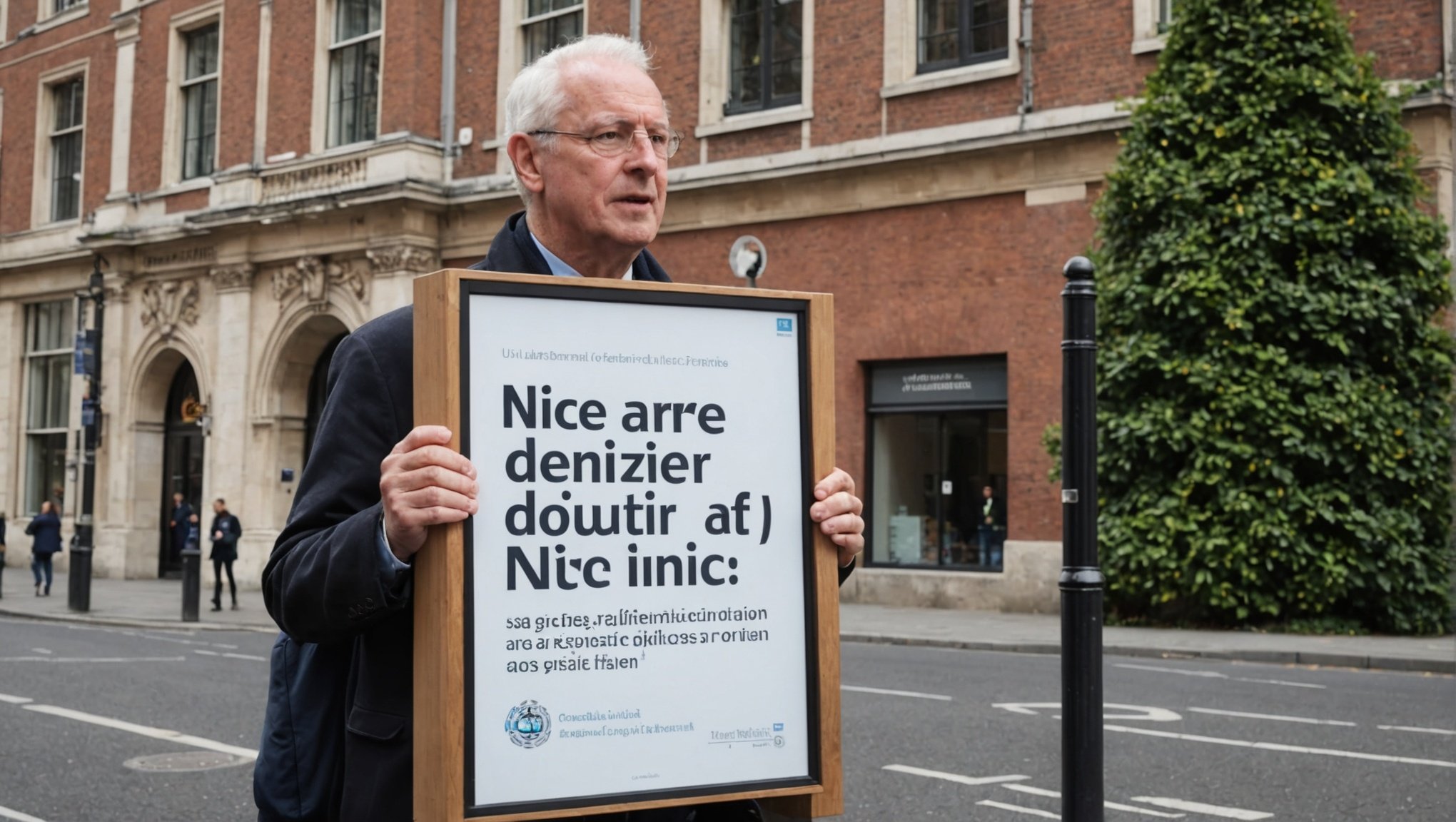Chronic pain can be a debilitating condition, impacting every facet of an individual’s life. It can significantly impair one’s quality of life, affecting sleep, psychological wellbeing, and overall health. In the United Kingdom, the National Institute for Health and Care Excellence (NICE) sets out evidence-based guidelines for the management of various health conditions, including chronic pain. These guidelines provide recommendations for effective treatment approaches, crafted by a committee of experts. This article delves into the latest NICE guidelines for managing chronic pain, providing a comprehensive overview of the recommendations to give you an understanding of the quality care expected for people experiencing this condition.
Understanding Chronic Pain: Definition and Impact
Chronic pain, as defined by NICE, is a pain that lasts or recurs for more than three months. It might occur due to an initial injury or illness, or it might have an ongoing cause. However, in some cases, it can occur without a clear cause. Chronic pain can be categorized into two types: primary and secondary. Primary chronic pain is a condition itself and not due to another disease, while secondary chronic pain is a symptom of an underlying disease.
This might interest you : Exploring the Impact of Video Game Therapy on Enhancing Motor Skills in Parkinson’s Patients
The impact of chronic pain on individuals can be profound. It can disrupt sleep patterns, causing fatigue and exacerbating pain levels. Additionally, chronic pain can lead to psychological distress, including anxiety and depression. Therefore, managing chronic pain effectively is paramount to enhance individuals’ quality of life.
Primary Chronic Pain: Recommendations for Management
The management of primary chronic pain can be challenging due to its complex nature. According to the latest NICE guidelines, the committee recommends a patient-centered approach for managing primary chronic pain. The guidelines emphasize the importance of clear communication between healthcare providers and patients, and the necessity of discussing treatment options and their potential benefits and risks.
Also to read : Is There a Correlation Between Vitamin B12 Deficiency and Neuropathy?
NICE advises against the use of painkillers for primary chronic pain due to lack of evidence of long-term benefit and potential harm. Instead, the committee recommends some non-pharmacological treatments. This includes psychological therapies, such as cognitive-behavioral therapy (CBT), and physical activity programs, including yoga and tai chi. NICE also recommends considering acupuncture for patients willing to try it.
Secondary Chronic Pain: Guidelines for Effective Care
Secondary chronic pain is indicative of an underlying condition. Therefore, managing secondary chronic pain involves treating the root cause of the pain. NICE provides detailed guidelines for the management of this type of pain.
For instance, NICE emphasizes the importance of a comprehensive assessment to diagnose the underlying condition accurately. The recommended therapies vary based on the underlying condition. For instance, for secondary chronic pain associated with osteoarthritis, NICE recommends core treatments such as exercise, weight management, and psychological therapies. In some cases, medicines like paracetamol, topical NSAIDs, and capsaicin might be recommended.
The Role of Psychological Therapies and Sleep Management
The mental health component of chronic pain management is an essential element of the NICE guidelines. There is an emphasis on psychological therapies such as CBT and acceptance and commitment therapy (ACT) to help patients manage their pain.
Moreover, chronic pain can significantly interfere with a person’s sleep, leading to a vicious cycle of pain and sleep disturbance. Hence, the guidelines recommend interventions to improve sleep hygiene. These may include cognitive and behavioral interventions, relaxation techniques, and maintaining a regular sleep schedule.
The Importance of Integrated Health Services
In managing chronic pain, an integrated approach is fundamental. According to the NICE guidelines, health services should aim to provide a coordinated approach to pain management. This involves ensuring that patients have access to a range of services, including pain management programs, psychological therapy services, and physiotherapy services.
Furthermore, NICE emphasizes the importance of shared decision-making and a personalized care plan. This involves collaborating with the patient to develop a care plan that reflects their preferences and goals. In doing so, patients are more likely to engage with their treatment plans, improving its effectiveness.
In summary, the NICE guidelines for managing chronic pain prioritize a comprehensive, patient-centered approach. It encourages non-pharmacological treatments and emphasizes the importance of managing the psychological aspects of chronic pain and improving sleep quality. By following these guidelines, healthcare providers can significantly improve the lives of people living with chronic pain.
Understanding Chronic Pain: Incorporating Patient Experience
As defined by NICE, chronic pain is a condition that persists or recurs for more than three months. It is a condition with a substantial impact on individuals, often leading to compromised sleep quality, psychological distress, and an overall decrease in quality of life. It is essential to understand that chronic pain is not merely a physical phenomenon – it encompasses a broad spectrum of the human experience, including the mental and emotional aspects.
The latest NICE guidelines accentuate the importance of incorporating patient experience in managing chronic pain. This includes understanding patients’ personal pain narratives, their coping mechanisms, and the socio-cultural context of their pain. This understanding forms the basis for a patient-centred approach, as it allows healthcare providers to acknowledge the multifaceted nature of chronic pain and tailor management plans that suit individual needs.
A critical aspect of this patient-centred approach is shared decision-making. The guidelines advocate for active patient involvement in deciding the course of treatment, making them an integral part of their pain management journey. This approach not only facilitates patient autonomy but also fosters a sense of control over their health, which can significantly enhance their determination to adhere to treatment plans and improve their quality of life in the long term.
Use of Non-Pharmacological Interventions in Pain Management
The NICE guidelines make a distinct shift from traditional pharmacological methods for managing chronic primary and secondary pain. Instead, they suggest the use of non-pharmacological interventions. The emphasis on non-pharmacological treatments reflects the recognition of the complex nature of chronic pain, which often cannot be effectively managed by drugs alone.
For primary chronic pain, non-drug interventions like psychological therapies and physical activity are recommended. Psychological therapy, particularly cognitive-behavioural therapy (CBT), can be a powerful tool for managing chronic pain. It equips individuals with strategies to change unhelpful thought patterns and behaviours, thereby helping them cope better with their pain.
Physical activity programs, including yoga and tai chi, are also recommended. Regular physical activity can reduce pain intensity, improve sleep quality, and enhance overall health and wellbeing. Acupuncture is another non-pharmacological intervention that the NICE guidelines recommend considering for patients willing to try it.
For secondary chronic pain, the guidelines recommend management programs based on the underlying condition. These may include exercise, weight management, psychological therapies, and in some cases, medication.
Conclusion: Crafting a Comprehensive Approach to Chronic Pain Management
The latest NICE guidelines for managing chronic pain underscore the importance of a comprehensive, patient-centred approach. By moving away from a strictly biomedical model of health and incorporating aspects of patient experience, they advocate for a holistic understanding of chronic pain. To this end, they emphasize the role of non-pharmacological interventions and psychological therapies in managing chronic pain.
Moreover, the guidelines highlight the significance of integrated health services in providing quality care. By ensuring access to a range of services – pain management programs, psychological therapy services, and physiotherapy services – they aim to create a coordinated approach to pain management.
By adopting these evidence-based guidelines, healthcare providers can significantly improve pain management, thereby enhancing the quality of life for people living with chronic primary and secondary pain. Ultimately, the goal is to foster an environment where individuals feel heard, understood, and supported in their journey towards better health. The NICE guidelines serve as a robust roadmap for achieving this goal, making them an invaluable resource for healthcare providers and patients alike.











